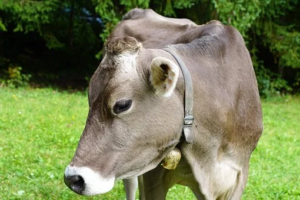Silageis an Animal fodder which is made from green crops and has been pickled. This type of fodder is made after preserving the green crop during that period when it was available in abundance. Silage is achieved after process of acidification and fermentation.
The main objective of the silage is to make food enriched with all needed nutrients including proteins and sugar. It is made and stored in a period when fodder is available in abundance and in cheap prices and used in a period when availability of fodder is difficult and very costly.
Why it is very important for Animals
All over world lot of animals die due to un availability of food. Moreover whenever animal become old and not in productive stage, their owner abandon them to die as they do not have resources to provide food to these animals.
All over world especially in developing countries where people turning unproductive animal because they cannot afford to provide costly fodder. There are instances where these animal especially cows demolishing crops and in the end dying without food. Some people has come forward to make shelters but the situation is so big that these volunteers struggling to fed these animals.
This is totally inhuman and therefore we have to come up with something which can save these animals from dying without food.
It is accepted fact that there are few months in a year, in which abundant quantity of fodder available and if we can preserve it. Then it can be used for the period when fodder is not available or available at very high prices.
Silage can be used to feed animals and we can save millions of animal dying from hunger. Not only this we can also improve health of our animals as well as increase the production of animals.
Silage is used for almost all ruminants’ animals. Silage is perfect food for Cows, sheep, goat, buffaloes etc.
Dairy cow require lot of energy to produce milk it is therefore silage which has protein, fiber and abundant source of energy.
Crops Good for making silage
Maize, Sorghum, hybrid Napier and oat can be used to make easily to make silage. These crops are good for making silage as it contain fermentable carbohydrates which is needed for bacteria to produce organic acid. If you are using Maize for silage then use it when seeds of this crop are soft. Same thing is applicable to sorghum crop.
If it is necessary you can use leguminous crops but you will have some problem to make good silage because these crops are in rich protein and low in sugar.
Preparing Silage
To make Silage, Fodder has to go through a process in which fodder is fermented in anaerobic situation so that fodder should not be decayed and it maintains its good qualities especially nutrient quality. To produce organic acid by bacteria in the process of silage making, require good quantity of sugar. Normally Molasses is used for sugar as it has good quantity of sugar.
There are basically two methods to make silage.
1. Putting cut green crops in pit or silo.
2. Piling the fodder in large heap
Silage is normally made with the use of Pits, tranches and towers. For Dairy animals like cows and buffaloes, pit can be used.
Location of silage pit must be in place which is safe from rodents like rats and area should be free from direct sun light. Fodder should be compressed it down to purge oxygen.
Fodder which we are using for silage should have around 70% moisture content.
During Rainy season fodder has much more moisture %, it is therefore advisable to first wilt in the sun and reduce it.
How to make Silage
There are forage harvesters available in the market which can collect and chop the forage. After chopping plant material it deposit in the trucks.
For making silage on small scale you can use small equipment’s available from local market to chop forage in to small pieces.
First of all make pit.
How much tonnage of silage will be prepared in pit?
To calculate it
Silage Qty. (Tonnage) = Length X width x height / 45
So = 60*30*8 = 14400 cubic feet /45= 320 Tonnage
After making pit place big polythene sheet which cover all the area including wall so that forage should not come in contact with soil. Size of forage should be around 1 inch in length. For good fungi growth molasses and fungi should be sprayed on material at the ratio of 1:2.
It should be sprayed every layer of fodder evenly and after final layer of fodder it must be covered and wrapped with polythene sheet, the top of the pile. After covering and wrapping with it now put good cover of soil. In this way we can keep silage more than one year.
There are few stages of Silage process
1. Aerobic Phase
We have to make sure that we should eliminate oxygen from fodder as much as possible. It can only be done through good packing and sealing. Some left over oxygen is used in this phase as per following process:
Cells of forage used oxygen and sugar and produce water and heat.
If packing and sealing is poorly done then aerobic phase will take longer than one day and result in high silage temperature, high dry matter losses and more mold growth. It can also have browning reaction which can convert digestible protein in to bound which animal especially cow cannot digest it.
2. Lag Phase
In this phase plant enzymes break down starch and fibre into simpler sugars and also break down plant protein and make it more soluble.
P.H of silage also start reducing and come down to around 5.5.
3. Fermenting Phase
At this phase almost all oxygen eliminated and lactic acid and acetic acid produced which increase acidity of silage.
3. Stable Phase
In about 2 weeks of fermenting phase . temperature of silage start coming down and pH reach to about 4.0. This is the phase in which bacteria stopped growing and silage is preserved.
In stable phase lactic acid -3-6 % is achieved.
Days to prepare Silage
It takes around 30 days to ready. Once it is ready you can start giving it to animals, opening from one side of the pit.
Characteristics of Good Silage
1. As Silage is prepared in pits, it is less affected by weather damage; it is therefore have more nutrients.
2. Good quality silage is of light greenish coloure.
3. Silage has smell like of vinegar and has no mould growth.
4. It has pleasant aroma and mild acidic taste.
5. It has 3 to 4 % palatability, increased nutrient value and P.H around 4.2.
6. If it made in proper way, it will be liked by Animals specially due to mild acidic taste.
7. Silage inoculants contain lactobacillus plantarum acid bacteria.
8. Silage is better than hay due to its fermentation as fermented products are less prone to spoilage.
After the Harvest
1. Give one month to ferment it properly so that it develops fermented sourish smell.
2. You should start taking out silage from one side of pit and take out silage as per your requirement only.
Why Silage is important
1. It is delicious and nutritious for animals.
2. It is cost effective source for cattle food.
3. Silage prevents valuable fodder going to waste.






lamborghini huracan
Rich in antioxidants, nutrients, and anti-inflammatory properties, green tea is always a healthy choice. What you can’t assume is that all green tea is created equal, therefore all tastes the same.
Until now popular in Japan and China Green tea is slowly finding favor in the lives of such people. Known for its oxidative nature Green tea’s benefits include weight loss, reducing bad cholesterol, fighting diseases like throat infection, enhanced memory and aid in quitting smoking.
win money daily
We can go on and on about the benefits of drinking green tea, but here are just a few: research shows that green tea can create a stimulating effect to help keep us energized and focused, without the jittery side effects of coffee or espresso.
Green tea has become famous all throughout the worlds because it contains many different health benefits. Green tea originated from China and is considered very healthy tonic due to its antioxidant properties.